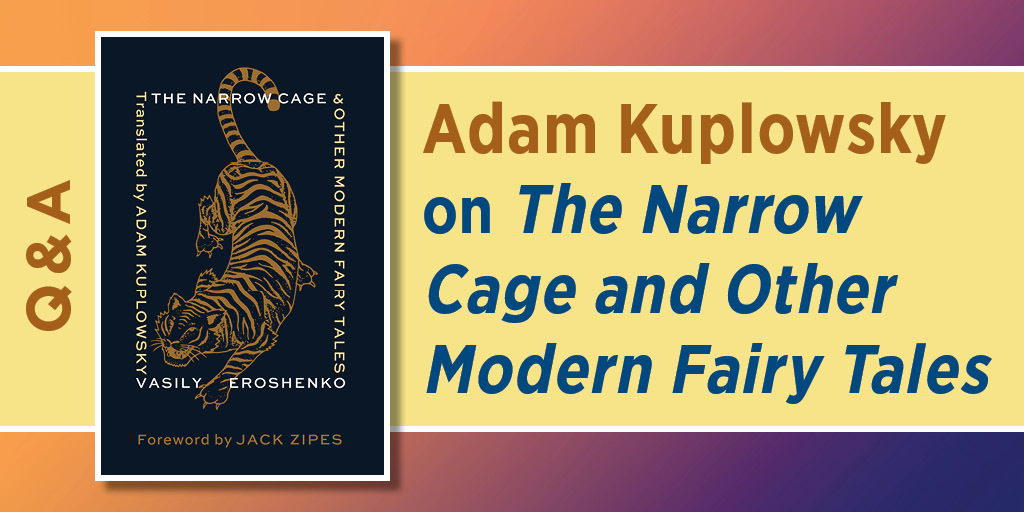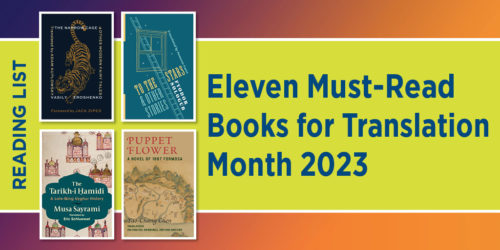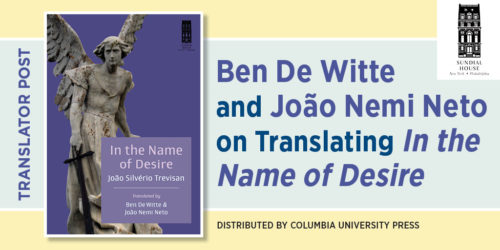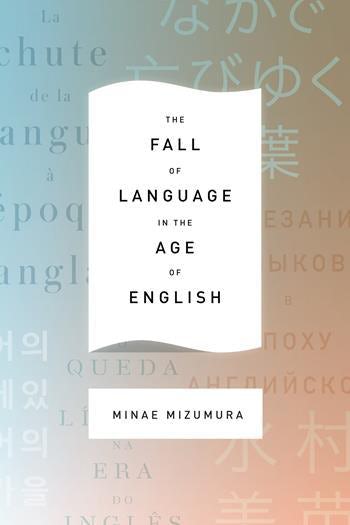Q&A: Adam Kuplowsky on The Narrow Cage and Other Modern Fairy Tales

Born in imperial Russia, the blind writer, translator, and teacher Vasily Eroshenko (1890–1952) achieved fame in Japan for both his social activism and his storytelling. The Narrow Cage and Other Modern Fairy Tales introduces English readers to a collection of Eroshenko’s stories. Translated from the Japanese and Esperanto into English by Adam Kuplowsky, these fables tell the stories of a religiously disillusioned fish, a jealous paper lantern, a scholarly young mouse, a captive tiger who seeks to liberate his fellow animals, and many more. In this Q&A, Kuplowsky discusses the process of translation, Eroshenko’s unique literary voice, and the enduring significance of the work.
Q: What were some of the challenges you faced, or insights you had, when translating Eroshenko’s tales from Japanese and Esperanto?
Adam Kuplowsky: Some of Eroshenko’s tales contain typographical errors, awkward syntax, redundancies, and narrative inconsistencies, which occasionally call for a bit of problem-solving on the translator’s part, such as adding, removing, and reorganizing text. Naturally, most of this work was cosmetic, as my goal was to present Eroshenko’s tales as effectively as possible to a readership that would have likely never heard of Eroshenko himself. To an extent, I feel that every story allows for a different level of intervention in translation. And fairy tales and fables, by virtue of their ties to an oral tradition of instruction and delight, allow for more freedom in their retelling. That is, if the reader or listener has difficulty following such stories, the messages of these stories may get lost. And effectively conveying the messages of Eroshenko’s tales was always my priority when translating. Looked at another way, I feel like I was merely doing the kind of editorial work that was previously done by some of Eroshenko’s transcriptionists, like Kamichika Ichiko, and his posthumous editors, like Takasugi Ichirō.
But there are also ways in which Eroshenko’s linguistic “deficiencies” may have played to my advantage. To cite an example of a minor but interesting typo, a friend of mine once remarked that he giggled on reading the first line of “The Narrow Cage,” which begins: “トラが疲れた” [Tora ga tsukareta]. “You know, we don’t really use the particle ‘が’ [ga] like that in Japanese,” he told me. To be honest, I hadn’t thought of it. But these sorts of errors are the kinds that non-native speakers make all the time, which, I think, made my act of translating Eroshenko’s words more intuitive. That is, both Eroshenko’s composition and my translation come from the mindset of a non-native speaker.
As for the Esperanto translations—one unique challenge that I had to face was, well, the language! After all, at the outset of this project, I had only thought to translate those stories which Eroshenko had written in Japanese. But later, when it was suggested to me that an expanded collection might have a better chance of getting published, I decided to look at the Esperanto tales as well. Thankfully, they had already been beautifully translated into Japanese by Takasugi Ichirō and Miyamoto Masao, so I knew that I could lean on their efforts if I ever needed to. However, I committed myself first to learning the basics of Esperanto, and then went through the tales with a dictionary. At first, I was translating word-by-word, but by the time I’d finished, I was reading with ease.
Q: Eroshenko’s tales are often characterized by a childlike “innocence” and intense “morbidity.” Does this contradiction in tone make them hard to categorize?
Kuplowsky: Before completing my manuscript, I tried to get a few of my translations published in various print and online journals. The editors who got back to me seemed to like Eroshenko’s stories well enough, but found them to be either “too adult for children” or “too childish for adults.” This is a recurring complaint that I don’t quite understand. What is it about Eroshenko’s tales that is “too adult” for children? Is it their explicit depictions of violence? But then, how do they depict violence differently from, say, traditional folktales, with their man-eating wolves and murderous husbands, or from the more literary tales of Hans Christian Andersen, whose little mermaid is forced to forfeit her tongue and live in agonizing pain, walking on land as if on swords, all in order to take a human form? Perhaps it is their political content, then—Eroshenko’s critiques of church, capitalism, and colonialism—that is thought to be too complicated for young readers. And yet I think that children are well-aware of the injustices of such institutions, as they themselves are often the victims of them. No, children are far more intelligent than we tend to believe. And while it’s true that most of Eroshenko’s tales are bleak, and lack the “happy ending” that adults understandably want for children, they are certainly not without hope. Rather, by presenting grave problems and eschewing easy solutions, such stories provide space for both children and adults to hope for better, more equitable societies, reminding them that real problems take real work, will, and care to solve. I think that this is something that, historically, children have deeply appreciated in Eroshenko’s tales, and there is no better example of this than the story of Karl Yoneda, who dropped out of high school in Hiroshima to serve as Eroshenko’s transcriptionist in Beijing and later grew up to become a well-known labor organizer in the United States.
As for Eroshenko’s tales being “too childish” for adults—well, that seems to me to be plain silly. Sadly, adults don’t read enough children’s literature, which I think has some of the most clearly articulated social and political commentary ever produced. In fact, I don’t even know why we qualify it as “children’s literature” when it is just literature plain and simple.
Q: What is the significance of Eroshenko’s tales today?
Kuplowsky: As was the case a century ago, the significance of Eroshenko’s tales today is manifold. However, I will try to limit myself to only two examples.
Firstly, they are significant as literary artifacts of the world’s blind community and as historical examples of disability literature in general. This might surprise you (or it might not), but during the pitching of my manuscript, I was disheartened by an editor of a well-known university publishing house who questioned whether Eroshenko could have lived such an exciting life, or have written such poetic tales, as a blind man. I feel the need to mention this, as it is yet another example of how close-minded the publishing industry, be it popular or academic, can be. Regarding the content of Eroshenko’s work, Amanda Leduc, an author and disability rights activist, has written brilliantly on the ways in which the fairy tale genre has historically excluded, stereotyped, and even vilified people with disabilities and how we, as a society, need to tell more diverse stories. Eroshenko is but one of many authors whose stories are uniquely informed, whether explicitly or implicitly, by disability, and I hope that the publication of this collection may serve as a reminder of the importance of reading and supporting literature by writers with disabilities, both historic and current.
Secondly, and more generally, Eroshenko’s tales are significant for their enduring sociopolitical messages. When I first read them, I was so surprised with how relevant they were to our times. Eroshenko wrote of colonization, police brutality, environmental destruction, the marginalization of the poor and disabled, and political dogmatism in ways that were certainly true in his time and continue to be true today. Then, just as I was wrapping up my manuscript, the Russian Army invaded Ukraine. Suddenly, there was some more relevance. My mind immediately turned to Eroshenko’s tale “An Eagle’s Heart,” which begins: “There once was a mountain kingdom that was ruled by its larger more powerful neighbor.” However, I don’t think that Eroshenko’s tales are necessarily relevant to the war in Ukraine specifically, but to war in general: how the people who suffer its effects the most are, regardless of where they fall on a map, ordinary people whom politicians and military generals and corporations claim to be protecting but really could not care less about. Perhaps, then, Eroshenko’s tales can help us to not lose sight of fact that we owe our greatest allegiance to the well-being of all people and the natural world—that we ought to call out injustice wherever it rears its ugly head, whether it be in the cowardly actions of Putin and his cronies, or the shameless resource extraction and hypocritical human-rights stances of so-called “Western” democracies, or, on a local level, in everyday racism, ableism, misogyny, and human-centrism…








